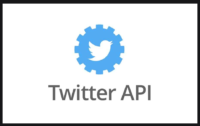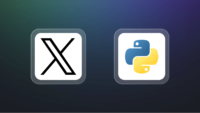Essential Python Libraries for Data Science and Analytics
Python is a versatile programming language that can be applied to a wide range of tasks, from developing web and desktop applications to performing complex calculations, such as data analysis. With this sort of versatility, It is of no doubt that Python has emerged as the go-to language for data analysis, thanks to its flexibility and powerful libraries. Whether you’re working with small datasets or large-scale big data, Python provides all you need to help you draw insights and visualize your data. In this article, we’ll explore the top 10 Python libraries you need for efficient and effective data analysis.
NumPy(Numerical Python)
First on this list is numpy, the most used open source python library for numerical computation and scientific computing, especially for array manipulation. It’s a general-purpose array-processing package that provides powerful features that allow users to manipulate large arrays and matrices efficiently.
Features:
- Multi-dimensional array support
- Vectorized operations
- Indexing and slicing
- Array manipulation
- Linear algebra
Application: Ideal for numerical data manipulation and mathematical operations
Pandas
Pandas is a free python software library for data analysis, manipulation and data cleaning among others. Pandas also has multiple tools for reading and writing data between in-memory data structures and different file formats. It is perfect for quick and easy data manipulation, data aggregation, reading, and writing the data and data visualization. Pandas can also take in data from different types of files such as CSV, Excel, or a SQL database and create a Python object known as a data frame.
Features:
- Powerful data structures for tabular data (DataFrames and Series)
- Rich functionalities that gives you the freedom to deal with missing data
- Enables you to create your own function and run it across a series of data
- Contains high-level data structures and manipulation tool
Application: Commonly used for loading and manipulating structured datasets (CSV, Excel).
Matplotlib
Matplotlib is a plotting library for python used for creating fixed, interactive, and animated Python visualizations. A large number of third-party packages extend and build on Matplotlib’s functionality, including several higher-level plotting interfaces (Seaborn, HoloViews, ggplot, etc.)
Features:
- Usable as a MATLAB replacement
- Supports dozens of backends and output types
- Low memory consumption and better runtime behavior
Application: Visualize the distribution of data to gain instant insights
Seaborn
Seaborn is one of the best data visualization library for Python that is based on Matplotlib and closely integrated with the NumPy and Pandas data structures. It has various dataset-oriented plotting functions that operate on data frames and arrays that have whole datasets within them. Seaborn is a high-level interface for creating attractive and informative statistical graphics which are crucial for studying and comprehending data. The Seaborn data graphics can include bar charts, pie charts, histograms, scatterplots, error charts, etc.
Features:
- Flexible plotting functions
- Built-in themes for attractive visualizations
- Integration with pandas
Application: Ideal for statistical visualizations with complex datasets
SciPy
SciPy is a free software library for scientific computing and technical computing of data. This library is built on the NumPy array object and it is part of the NumPy stack which also includes other scientific computing libraries and tools such as Matplotlib, SymPy, pandas, etc.
Features:
- Collection of algorithms and functions built on the NumPy extension of Python
- High-level commands for data manipulation and visualization
- Multidimensional image processing with the SciPy nd image submodule
- Includes built-in functions for solving differential equations
Application: Multi-dimensional image optimization..
SciKit Learn
Scikit-learn is a machine learning library with tools for data preprocessing, classification, regression, clustering, and more. Scikit-Learn is a machine learning library that provides almost all the machine learning algorithms you might need. It is designed to be interpolated into NumPy and SciPy.
Features:
- clustering
- regression
Application: Data transformation and preprocessing
Plotly
Plotly is a free open-source graphing library that can be used to form data visualizations. Plotly (plotly.py) is built on top of the Plotly JavaScript library (plotly.js) and can be used to create web-based data visualizations. Plotly offers different unique chart types like histograms, scatter plots, line charts, bar charts, pie charts, error bars, box plots, multiple axes, sparklines, dendrograms, etc.
Features:
- Support for interactive and complex visualizations.
- Collaboration and sharing
- Easy integration with pandas
Application: Ideal for creating interactive, web-based dashboards and visualizations.
Statsmodel
Statsmodel is a free python library used for statistical modeling and hypothesis testing, including regression models and time series analysis. Statsmodel provides classes and functions that allow users to estimate various statistical models, conduct statistical tests, and do statistical data exploration.
Features:
- Works with DataFrames.
- Regression models and time series analysis.
- Contains advanced functions for statistical testing and modeling not available in numerical libraries like NumPy or SciPy.
Application: Used for statistical tests and econometric analysis.
Tensor Flow
Tensor Flow is a free end-to-end open-source platform that has a wide variety of tools, libraries, and resources for Artificial Intelligence. It was developed by the Google Brain team Tensor Flow is a deep learning library used to build neural networks and machine learning models.
Features:
- Support for deep learning models (CNNs, RNNs, etc.).
- Distributed computing for large datasets.
- Models can be developed easily.
- Easy deployment and computation using CPU and GPU. .
- Compatible with Keras – a high-level API of Tensor Flow.
Application: Ideal for neural network modeling and deep learning tasks.
Beautiful Soup
Beautiful Soup is a library that makes it easy to scrape information from web pages. Beautiful Soup is another popular python library for data science and it’s mostly used for web crawling and data scraping. Users can collect data that’s available on some website without a proper CSV or API, and Beautiful Soup can help them scrape it and arrange it into the required format.
Features:
- Beautiful Soup provides a simple, Pythonic API for navigating, searching, and modifying a parse tree.
- The API is intuitive and avoids a lot of boilerplate code you would have to write if parsing HTML yourself.
Application: Data mining for research
Selecting the right Python library for your data science tasks is a crucial decision that can significantly impact the success of your projects . The top 10 Python libraries highlighted in this article — including NumPy, Pandas, Matplotlib, Scikit-learn, Tensor-Flow, SciPy, Plotly, Statsmodel, Seaborn, and Beautiful Soup — provide powerful capabilities for data manipulation, visualization, machine learning, and statistical analysis. By mastering these libraries, data scientists can efficiently tackle complex data challenges and drive impactful insights from their data.







